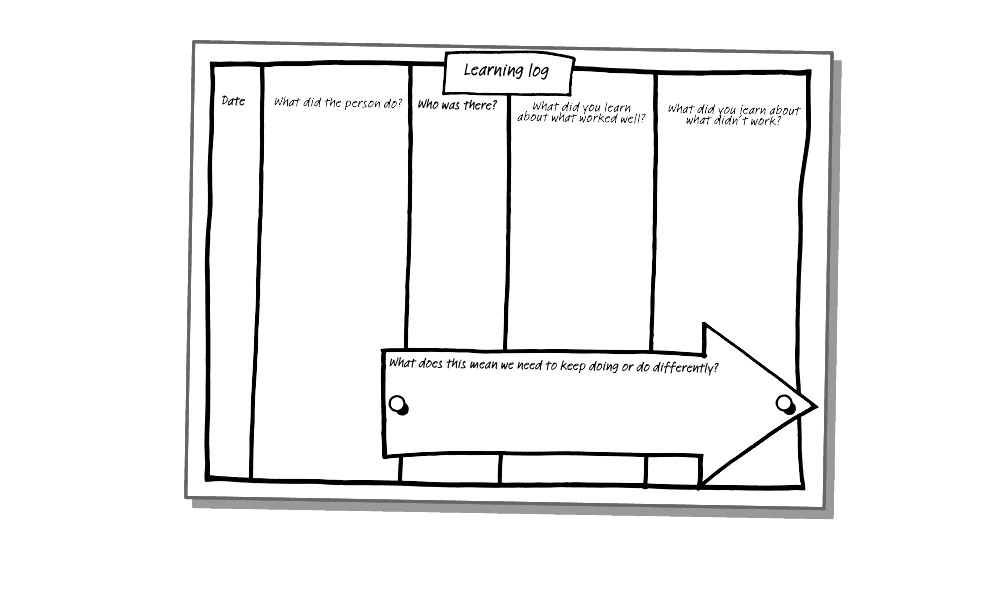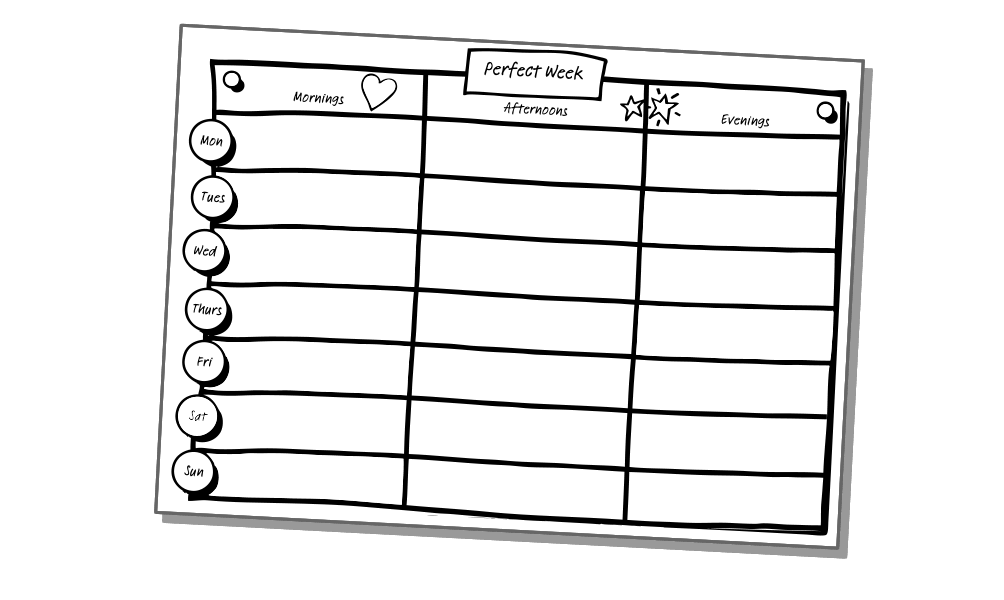The 12 person-centered thinking tools
There are many different person-centered thinking tools. They give you practical ways to gather and use information that will help you to plan with a person (not for them); so that they can live the life they choose. In this course we will look at 12 of the most commonly used person-centered thinking tools.

One-Page Profile: Who am I? A one-page profile is a way of getting to know more about someone. It tells you what others like and admire about a person; what is important to them and how to support them well.

Learning Log: What have we learned? You can use the learning log tool to help people think through activities and events to discover what worked well, what didn’t work well and then reflect on what they have learned. By using this tool it is easier to discover how to improve things for the future.

Good Days and Bad Days: How can you support me to have more good days and fewer bad days? You can use the good days and bad days tool to explore in detail what makes a good day for a person (what needs to be present in their daily life) and what makes a bad day (what needs to be absent). You can then set actions to help the person have more good days. It also provides an opportunity to learn what is important to the person and how to support them.

Perfect Week: How do I want to spend my time? You can use the perfect week tool to find out what a person wants to happen on a day-to-day basis, and what support they need to make this take place.

Working/Not Working: What did we do that worked and what didn’t work? You can use the Working/Not Working tool to help you think through a situation and capture what is working or making sense, as well as what is not working and needs to change from everyone’s perspective. Using this tool helps to identify what needs to be done to improve things, as well as recognize what is positive and needs to stay the same.

4+1 Questions: What have we learned about this situation? You can use the 4+1 questions tool to gather a team’s collective learning to determine the next step. It asks the following questions:
- What have you tried?
- What have you learned?
- What are you pleased about?
- What are you concerned about?
It is a way to reflect on an issue or project, look at what has been tried and learned, and answer the “+1” question:
- What do we need to do next?

Donut (Roles and Responsibilities): What are and what are not staff’s responsibilities? You can use the donut (roles and responsibilities) tool to clarify roles and responsibilities and answer the basic question ‘who does what.’ This tool helps employees not only to see what they must do (core responsibilities), but where they can try things (judgement and creativity) and also identifies what is not their responsibility. This tool can support positive risk taking.

Decision Making: What are the decisions I make and how do I make them? This tool creates a clear picture about how people make decisions, the range of decisions they make, and what support they may need. It helps to understand how much power, choice, and control the person has over decisions in their life and will lead to actions to increase the range and significance of the decisions the person makes.

Matching Support: Who are the best people to support me? You can use the matching support tool as a structured way to think about the best matches between the person being supported and the people supporting them (employees, personal assistants and volunteers) or potential people to live with. It works across four areas – skills wanted and needed; support needed; personality characteristics; and shared common interests.

Relationship Circles: Who is in my life? You can use the relationship circles tool to identify who is important in a person’s life; create actions to increase the number and depth of the relationships that the person has; and to inform how to support the person in their relationships.

Community Mapping: With whom and where do I spend my time? You can use the community mapping tool to map out where the person spends their time (outside of their home). It can help you think about what it would take to extend the places where the person goes; what is working and not working about where they go; where they can contribute to their community life; and what opportunities could be created to connect and develop relationships.

Communication Charts: What am I saying with my behavior as well as my words? The communication charts are a simple but powerful way to record how someone communicates with her or his behavior, and how we respond and communicate with them. Everyone who is dependent on others for support has an especially critical need to have her or his communication understood.